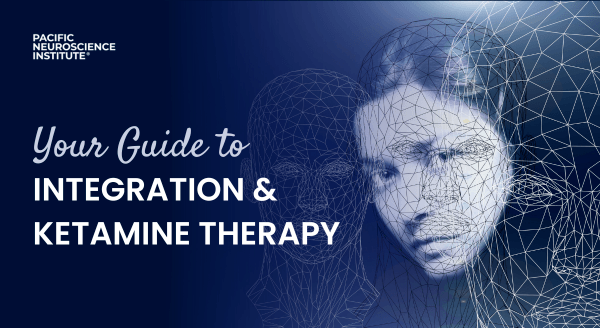

Understanding PTSD
by Zara Jethani
Post-Traumatic Stress Disorder (PTSD) is a mental health condition that can develop after experiencing or witnessing a traumatic event. It affects individuals of all ages and backgrounds, from military veterans to survivors of natural disasters, accidents, or violent assaults. Understanding PTSD is important for recognizing its symptoms, seeking help, and promoting recovery.
What Causes PTSD?
PTSD can stem from various traumatic experiences, including but not limited to:
- Combat Exposure: Military personnel often face traumatic events during combat, leading to PTSD.
- Physical or Sexual Assault: Survivors of assault may develop PTSD due to the severe psychological impact of the experience.
- Natural Disasters: Events such as earthquakes, hurricanes, or floods can trigger PTSD symptoms in survivors.
- Serious Accidents: Those involved in accidents, such as car crashes or plane incidents, may develop PTSD.
- Witnessing Trauma: Individuals who witness traumatic events, like a violent crime or a terrorist attack, can also develop PTSD.
Symptoms of PTSD
Symptoms of PTSD can manifest in various ways and may appear shortly after the traumatic event or even years later. They are broadly categorized into four areas:
- Intrusive Memories: These can include flashbacks, nightmares, or distressing thoughts related to the traumatic event.
- Avoidance: Individuals may try to avoid places, people, or activities that remind them of the trauma. They might also avoid talking about it altogether.
- Negative Changes in Thinking and Mood: This may involve feelings of detachment, difficulty experiencing positive emotions, memory problems, negative thoughts about oneself or the world, and a decreased interest in activities once enjoyed.
- Changes in Reactivity: Individuals may become easily startled, have difficulty sleeping, experience angry outbursts, or engage in self-destructive behavior.
Diagnosis and Treatment
Diagnosing PTSD typically involves a comprehensive evaluation by a mental health professional. Treatment options may vary depending on the individual’s symptoms and severity but commonly include:
- Therapy: Cognitive-behavioral therapy (CBT) is highly effective in treating PTSD. This therapy helps individuals identify and change negative thought patterns and behaviors associated with the trauma.
- Medication: Antidepressants and anti-anxiety medications may be prescribed to alleviate symptoms such as depression, anxiety, and insomnia.
- Exposure Therapy: This involves gradually exposing individuals to the traumatic memories or situations in a safe and controlled environment, helping them to process and overcome their fear.
- Eye Movement Desensitization and Reprocessing (EMDR): This therapy involves guided eye movements while recalling the traumatic event, facilitating the brain’s processing of the traumatic memories.
- Ketamine-Assisted Psychotherapy (KAP): A relatively new type of therapy, this involves the use of low dose ketamine administered in a controlled environment facilitated by a therapist. The dissociative properties of ketamine allow the patient to examine the traumatic event dispassionately and address the root cause of their current difficulties.
- Clinical Trials with MDMA: MDMA-assisted therapy for PTSD received Breakthrough Therapy Designation from the FDA in 2017. The treatment has however not yet been approved by any regulatory agency, and the safety and efficacy of this approach for PTSD treatment have not been established. Investigational trials with MDMA-assisted therapy continue for PTSD as well as other indications.
- Support Groups: Connecting with others who have experienced similar traumas can provide validation, understanding, and support during the recovery process.
Seeking Help and Support
It’s essential for individuals experiencing symptoms of PTSD to seek professional help. Unfortunately, many people hesitate to seek treatment due to stigma or misconceptions surrounding mental health. However, PTSD is a real and treatable condition, and seeking help is a sign of strength, not weakness.
For loved ones and care partners, offering support and understanding is vital in providing a safe haven for the patient. Encouraging individuals to seek professional help, listening without judgment, and being patient are all ways to assist someone struggling with PTSD.
Next Steps
PTSD is a complex mental health condition that can have a profound impact on an individual’s life. However, with proper diagnosis and treatment, recovery is possible. By understanding the causes, symptoms, and available treatments for PTSD, we can create a more supportive environment for those affected and help them on their journey to healing and recovery.
At the Treatment & Research In Psychedelics (TRIP) Center at Pacific Neuroscience Institute® people have found success tackling PTSD through ketamine-assisted therapy (KAP).
For more information about ketamine-assisted therapy, contact us at 310-582-7612 or schedule a consultation.
Ketamine-Assisted Psychotherapy Specialty Team at TRIP
Useful Links
Related Articles
Related Videos
 Navigating New Frontiers: Exploring Psychedelic-Assisted Therapy at TRIP
In the complex landscape of mental health, a revolution is underway: psychedelic-assisted therapy. At the forefront of this movement is the TRIP Center at Pacific Neuroscience Institute. The Treatment &…
Navigating New Frontiers: Exploring Psychedelic-Assisted Therapy at TRIP
In the complex landscape of mental health, a revolution is underway: psychedelic-assisted therapy. At the forefront of this movement is the TRIP Center at Pacific Neuroscience Institute. The Treatment &…
 Psychedelic-Assisted Therapy with Ketamine at PNI
Using ketamine in a psychedelic-assisted approach, we treat people 16 years and older who are treatment-resistant or who wish to effectively tackle deep-rooted, unresolved trauma that has not been adequately…
Psychedelic-Assisted Therapy with Ketamine at PNI
Using ketamine in a psychedelic-assisted approach, we treat people 16 years and older who are treatment-resistant or who wish to effectively tackle deep-rooted, unresolved trauma that has not been adequately…
 Treatment & Research In Psychedelics (TRIP) at Pacific Neuroscience Institute | Explainer
At PNI’s Treatment & Research In Psychedelics (TRIP) Program, we conduct clinical trails at the forefront of innovative and transformative medicine. TRIP, spearheaded by Daniel Kelly, MD and Keith Heinzerling,…
Treatment & Research In Psychedelics (TRIP) at Pacific Neuroscience Institute | Explainer
At PNI’s Treatment & Research In Psychedelics (TRIP) Program, we conduct clinical trails at the forefront of innovative and transformative medicine. TRIP, spearheaded by Daniel Kelly, MD and Keith Heinzerling,…

Navigating New Frontiers: Exploring Psychedelic-Assisted Therapy at TRIP

Psychedelic-Assisted Therapy with Ketamine at PNI

Treatment & Research In Psychedelics (TRIP) at Pacific Neuroscience Institute | Explainer
About the Author

Zara Jethani
Zara is the marketing director at Pacific Neuroscience Institute. Her background is in molecular genetics research and healthcare marketing. In addition, she is a graphic designer with more than 20 years experience in the healthcare, education and entertainment industries.
Last updated: September 11th, 2024






